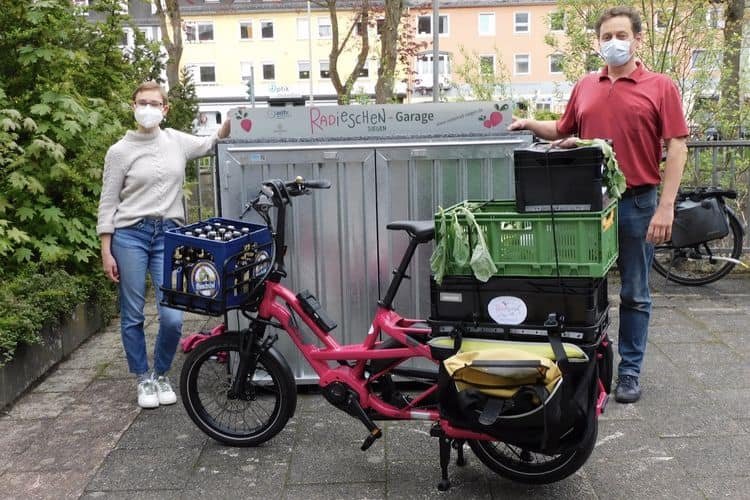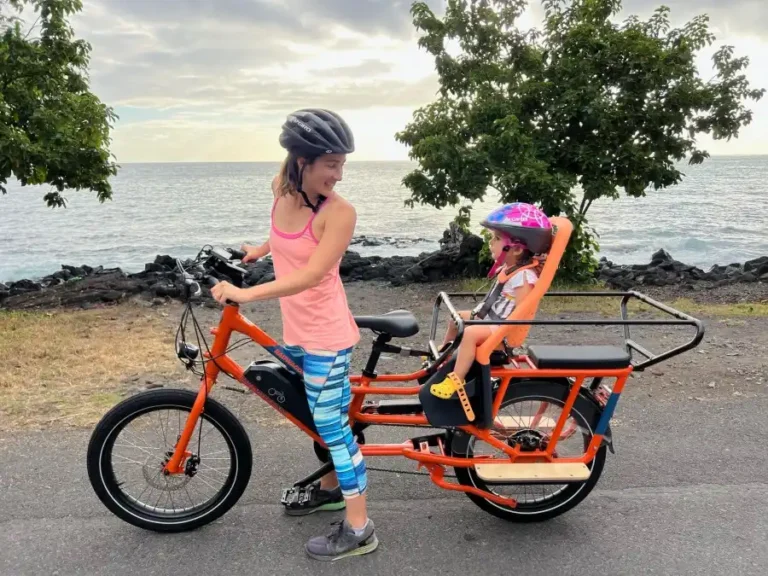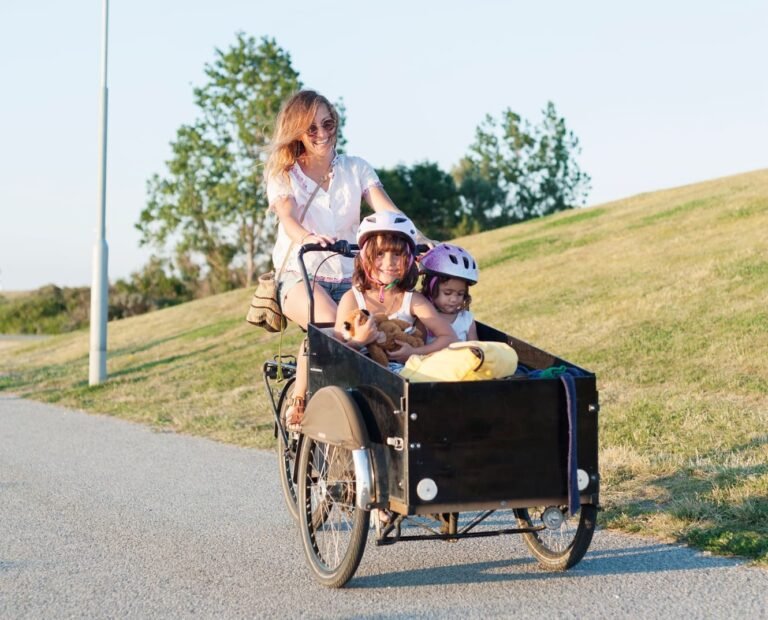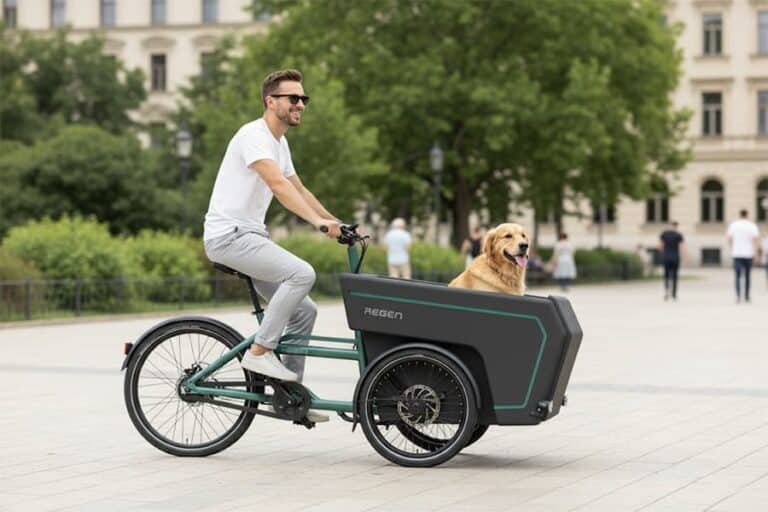소개
에서 Regen, we often hear this question from customers, distributors, and even first-time riders: “What exactly is the difference between throttle and pedal-assist on e-bikes?” While the terms are used frequently in the industry, their practical meaning can be unclear to buyers and operators who are new to electric mobility.
Throttle and pedal-assist represent two distinct methods of controlling motor power in an e-bike. Each comes with unique advantages, regulatory considerations, and suitability for different use cases — particularly in 화물용 전기 자전거 where load capacity and efficiency matter.
In this guide, we explain how both systems work, compare their performance, and provide practical advice on choosing the right system.
Understanding Throttle Control
How a Throttle Works
A throttle operates much like the accelerator on a motorcycle or scooter. When engaged, it directly signals the motor to deliver power, regardless of whether the rider is pedalling. Common throttle types include:
- Thumb throttle: Pressed with the thumb while riding.
- Twist throttle: Similar to a motorcycle handle, rotated to engage power.
- Trigger throttle: Lever activated with the index finger.
Technically, throttles send an electronic signal (voltage range typically 1–4V) to the motor controller, which regulates current flow to the motor. The rider does not need to pedal for the motor to provide torque.
Advantages of Throttle Systems
- Instant power on demand – useful for hill starts, heavy loads, or navigating traffic.
- Reduced physical effort – ideal for delivery riders or those with limited leg strength.
- Simplified operation – intuitive for riders familiar with scooters or motorcycles.
Disadvantages of Throttle Systems
- Reduced battery efficiency – continuous throttle use drains the battery faster.
- Less natural cycling experience – does not encourage pedalling, limiting exercise benefits.
- Regulatory restrictions – throttles are often limited or banned in certain regions (e.g., EU pedal-assist-only compliance).
Understanding Pedal-Assist (PAS)
How Pedal-Assist Works
Pedal-assist systems (PAS) activate the motor only when the rider is pedalling. Power output is proportional to pedalling input, creating a more natural riding experience. Two common sensor types are used:
- Cadence sensors: Detect pedalling motion; deliver fixed assistance once pedalling is detected.
- Torque sensors: Measure rider’s force on the pedals and provide proportional motor support.
Motor assistance levels are typically adjustable through the display, ranging from eco (20–30% motor support) to turbo (250–400% support).
Advantages of Pedal-Assist Systems
- Regulatory compliance – fully legal under EN 15194 in Europe (maximum 25 km/h assisted speed, motor ≤250W continuous output).
- Extended battery range – more efficient as the motor supplements rider input.
- Natural cycling feel – closer to traditional riding dynamics.
- Scalability for cargo – torque sensors make hauling heavy loads smoother.
Disadvantages of Pedal-Assist Systems
- Learning curve – riders must adjust to selecting gears and assist levels effectively.
- Less instant control – takes a fraction longer to engage power compared to a throttle.
- Higher component cost – torque sensor systems add expense and complexity.
Key Differences at a Glance
| 기능 | Throttle | Pedal-Assist (PAS) |
|---|---|---|
| Activation | Rider engages lever or twist grip | Motor activates when pedalling |
| Pedalling Required? | No | 예 |
| User Effort | Minimal to none | Shared between rider and motor |
| 배터리 효율성 | Lower | 더 높음 |
| 승차감 | Scooter-like | Natural cycling |
| 최상의 대상 | Quick starts, short trips, heavy loads | Long rides, compliance, exercise |
| Regulations (EU) | Often restricted or banned | Fully compliant with EN 15194 |
| Regulations (US) | Allowed up to Class 2 e-bikes | Required in Class 1 & 3 e-bikes |
Regulatory Landscape
Europe (EN 15194 and DIN 79010)
Under EU law, an electrically assisted pedal cycle (EPAC) must:
- Provide motor assistance only when pedalling.
- Limit assistance to 25 km/h.
- Use motors ≤250W continuous rated power.
This effectively excludes throttle-only e-bikes from legal use on public roads unless restricted to “walk-assist mode” (up to 6 km/h).
United States (Class 1–3 System)
- Class 1: Pedal-assist only, up to 20 mph (32 km/h).
- 클래스 2: Throttle allowed, up to 20 mph.
- Class 3: Pedal-assist only, up to 28 mph (45 km/h).
This framework gives US riders and manufacturers more flexibility in offering throttle-equipped e-bikes.
Other Markets
- 중국: Throttle-dominant models remain common.
- 캐나다: Generally follows US Class system, with provincial variations.
For cargo bike OEM/ODM projects, Regen always advises aligning design specifications with the target market’s regulatory framework to avoid compliance issues at import.
Application in Cargo E-Bikes
Cargo bikes operate under very different conditions compared to standard commuter e-bikes. Load weight, terrain, and rider profile strongly influence whether throttle or pedal-assist is preferable.
- Urban last-mile delivery: Throttle can help riders launch quickly from stops with heavy loads.
- Long-distance logistics: Pedal-assist extends battery range and keeps speed consistent.
- Family transport bikes: Torque-sensor pedal-assist creates smoother acceleration, safer for children passengers.
- Steep terrain or bridges: A combination system (PAS + walk-assist throttle) offers the best balance.
Many premium cargo e-bikes today integrate dual systems: pedal-assist as the primary drive mode, with limited throttle (up to 6 km/h) for pushing or starting under load.
Choosing the Right System
When deciding between throttle and pedal-assist, consider:
- Regulations in your market – Will your bikes be road legal under EN 15194?
- User profile – Are your customers delivery professionals, families, or recreational riders?
- Load requirements – Does your model target heavy cargo capacity (e.g., 200–300 kg gross load)?
- Battery life expectations – Will efficiency or convenience take priority?
- Price positioning – Throttle-equipped systems can reduce drivetrain wear but may raise compliance costs.
At Regen, we recommend torque-sensor pedal-assist as the baseline for European markets, with optional walk-assist throttles for cargo bikes. In the US, Class 2 compliant throttle-assist cargo bikes can be an attractive option for urban delivery fleets.
Common Misconceptions
- “Throttle bikes are illegal everywhere in Europe.” Not entirely true — throttles are permitted up to 6 km/h walk-assist speed. Higher-speed throttle use is restricted.
- “Pedal-assist is always more efficient.” Efficiency depends on riding style; a rider constantly using turbo mode may drain the battery as fast as a throttle.
- “Throttle reduces drivetrain wear.” Actually, throttle can lower chain strain by reducing pedalling load, but continuous high torque still accelerates wear on hub motors and batteries.
실제 사례
One of Regen’s ODM clients in Portugal manufactures 프론트 로딩 카고 자전거 for urban grocery delivery. The fleet uses torque-sensor pedal-assist systems with a 250W mid-drive motor (EN 15194 compliant). However, they requested an additional thumb throttle limited to 6 km/h for loading ramps and tight warehouse manoeuvres.
This hybrid configuration allowed compliance with EU standards while improving rider ergonomics in demanding logistics environments.
결론
Throttle and pedal-assist are not competing technologies, but rather complementary tools. Throttle provides instant power and convenience, while pedal-assist ensures efficiency, compliance, and a more natural ride. For cargo bikes in particular, the decision depends heavily on local regulations and specific use cases.
At Regen, we help our partners evaluate the right drive system for their markets, whether it’s torque-sensor PAS for Europe, or throttle-friendly Class 2 solutions for the US. Selecting the right system at the design stage ensures smooth certification, better user adoption, and long-term fleet reliability.






